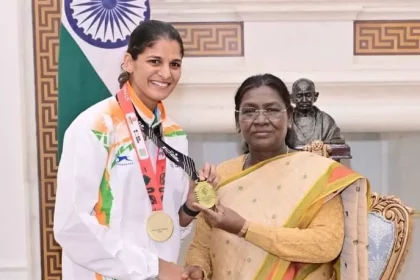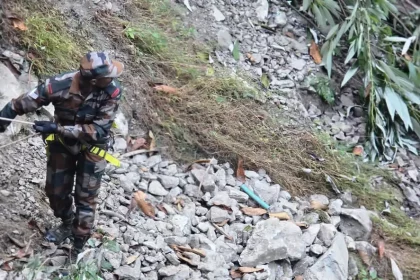Lt Gen Prasanna Kishore Mishra Reviews Security and CI Operations Readiness in Rajouri
Senior Army Leadership Conducts Key Operational Review in Rajouri Sector.
Security Forces Nab Armed Intruder Near International Border in Jammu
BSF Foils Possible Infiltration Bid in Pargwal Sector.
Naib Subedar Jaismine Felicitated by President of India for World Boxing Triumphs
Army Boxer Honoured for Gold-Winning Performance at World Boxing Cup & Championships.
Rear Admiral Arvind Rawal Assumes Charge as Chief Staff Officer (Technical) at Western Naval Command
A seasoned technical leader with 33 years of naval service takes charge at Western Naval Command.
Lieutenant General H. S. Vandra Reviews Operational Preparedness of Sarvada Agrani Brigade
COS Highlights High Training Standards and Engineering Excellence During Annual Camp.
Indian Army Launches Major Search and Rescue Operation After Truck Falls Off Cliff in Arunachal’s Chaglagam Region
18 Bodies Recovered So Far; Multi-Agency Teams Battle Harsh Terrain to Trace Remaining Workers.






